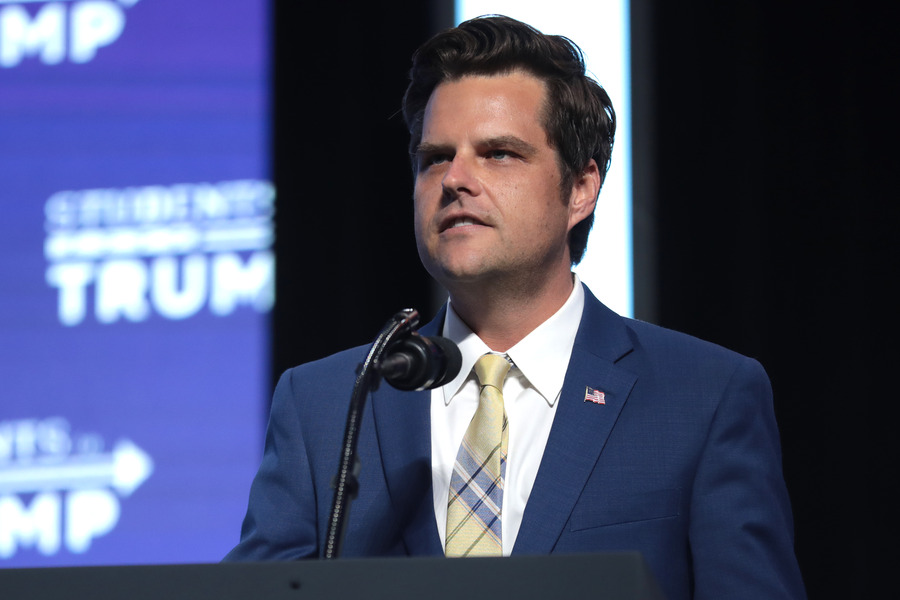Shutting Down DHS – A Realistic Appraisal
The press and the political junkies are all wrapped up in a discussion of the coming show down over the shut down of the Department of Homeland Security. The isn’t really about homeland security, of course – it’s about the President’s executive order extending enforcement discretion to many aliens who are present in the United States illegally.
Published by The Lawfare Institute
in Cooperation With

The press and the political junkies are all wrapped up in a discussion of the coming show down over the shut down of the Department of Homeland Security. The isn’t really about homeland security, of course – it’s about the President’s executive order extending enforcement discretion to many aliens who are present in the United States illegally. [The dispute may be mooted by court action – a Federal district judge enjoined the President’s policy just yesterday.] The Republicans in Congress don’t want to fund a policy with which they disagree – so they’ve proposed a funding bill that funds everything at DHS except the implementation of the immigration policy. The Democrats, contrarily, are insisting on a “clean” funding bill – that is one without a restriction on funding the immigration policy. The two are at an impasse and if nothing happens by February 27, when current funding for DHS lapses, DHS will “shutdown” – and then the political battle will be over who gets the blame for the shutdown.
But the shutdown is mostly a myth – the best estimate I can find is that 85% of the Department will continue to operate even after funding lapses. Or, perhaps more accurately, the President has sufficient discretion that if he chooses to he can keep roughly 85% of the Department running. Or he can shut down more.
The legal background for all of this lies in the concept of “essential” services. A good summary from the Congressional Research Service gives us more background than we really need. It identifies the origins of current practice in the face of a lapse in appropriations as a memorandum from OMB dating back to 1981. That memorandum in turn provides that federal agencies may continue “essential” functions even when there is a funding lapse. Here’s the summary:
Beginning [on the first day of the appropriations hiatus], agencies may continue activities otherwise authorized by law, those that protect life and property and those necessary to begin phasedown of other activities. Primary examples of activities agencies may continue are those which may be found under applicable statutes to:It’s actually pretty easy to read this and see that most of what DHS does would be considered an essential function – that is one that can continue even with a lapse in appropriations. It involves, for example, transportation safety, border protection, law enforcement and emergency and disaster assistance. The guidance would seem to suggest that most of DHS (Secret Service, Customs and Border Protection, Coast Guard, FEMA) would be deemed essential and continue operations. DHS, apparently, agrees. In 2013 it updated its “shutdown” plan. That contingency plan gives the following examples of activities that would be exempt from shutdown even with a lapse of funding:You should maintain the staff and support services necessary to continue these essential functions.
- Provide for the national security, including the conduct of foreign relations essential to the national security or the safety of life and property.
- Provide for benefit payments and the performance of contract obligations under no-year or multi-year or other funds remaining available for those purposes.
- Conduct essential activities to the extent that they protect life and property, including:
- Medical care of inpatients and emergency outpatient care;
- Activities essential to ensure continued public health and safety, including safe use of food and drugs and safe use of hazardous materials;
- The continuance of air traffic control and other transportation safety functions and theprotection of transport property;
- Border and coastal protection and surveillance;
- Protection of Federal lands, buildings, waterways, equipment and other propertyowned by the United States;
- Care of prisoners and other persons in the custody of the United States;
- Law enforcement and criminal investigations;
- Emergency and disaster assistance;
- Activities essential to the preservation of the essential elements of the money and banking system of the United States, including borrowing and tax collection activities of the Treasury;
- Activities that ensure production of power and maintenance of the power distribution system; and
- Activities necessary to maintain protection of research property.
-
Maintaining criminal law enforcement operations, including drug and illegal alien interdiction.
-
Continuing passenger processing and cargo inspection functions at ports of entry.
-
Providing the protective functions of the U.S. Secret Service.
-
Maintaining counter-terrorism watches or intelligence gathering or dissemination in support of terrorist threat warnings.
-
Retaining minimal personnel to maintain telecommunications as they relate to exempt activities.
-
Planning (strategic, business, budgetary, etc.).
-
Research and development activities.
-
Most policy functions, administrative, as well as programmatic, unless those functions can be justified by the above exceptions.
-
Regulatory, legislative, public affairs, and intergovernmental affairs.
-
Training and development.
Paul Rosenzweig is the founder of Red Branch Consulting PLLC, a homeland security consulting company and a Senior Advisor to The Chertoff Group. Mr. Rosenzweig formerly served as Deputy Assistant Secretary for Policy in the Department of Homeland Security. He is a Professorial Lecturer in Law at George Washington University, a Senior Fellow in the Tech, Law & Security program at American University, and a Board Member of the Journal of National Security Law and Policy.


-(1).jpeg?sfvrsn=143eb65_5)
.jpg?sfvrsn=d5e57b75_5)

